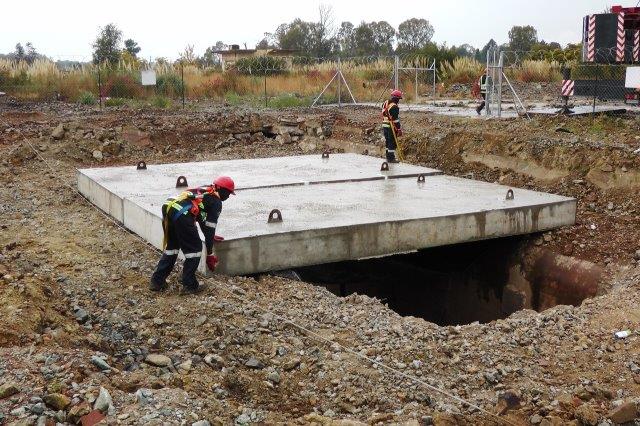Illegal mining activities pose a growing risk to redundant mine shafts, especially with the Witwatersrand Basin’s history of gold production. Specialist contractor Jet Demolition has stepped in to play a crucial role in sealing these shafts permanently below natural ground level (NGL) to prevent unauthorised access and enhance safety.
“Compliance with regulations, environmental considerations, and safety measures are top priorities in our turnkey service offering to the mining industry,” says Kate Bester, Contracts and Project Manager at Jet Demolition.
South Africa’s mining legacy runs deep, with the Witwatersrand Basin contributing over 50% of all gold ever produced on earth. However, this historical significance also indicates the prevalence of illegal mining activities, which continue to be a major concern for large mining houses.
Redundant mine shafts become prime targets for illegal miners, who risk their lives underground in search of unmined material and valuable infrastructure components like copper cable and steel. “Illegal mining arises from desperation, as people are willing to face life-threatening dangers for potential gains. These areas are not only susceptible to violence and intimidation, but also disrupt the safety and integrity of mining sites,” explains Bester.
To combat the growing threat of illegal mining and secure redundant shafts, Jet Demolition offers a comprehensive turnkey service to the mining industry. The process involves backfilling shaft barrels, designing permanent caps, and installing them at defined depths below NGL. It also records the final position and depth of the caps before backfilling and reinstating the natural material over them.
Mining houses mainly engage Jet Demolition’s services for two scenarios. The first is to permanently seal the shafts as a protective measure, preventing unauthorised access by illegal miners. The second is to rehabilitate the mining area entirely, making it safe for public use.
Interconnected shafts add complexity to the sealing process, necessitating a thorough understanding of the network to prevent adverse effects on miners in neighbouring shafts. Compliance with the Mine Health and Safety Act and the Department of Mineral Resources regulations, along with client-specific requirements, is vital for any permanent shaft sealing project.
Jet Demolition takes environmental considerations seriously, especially in managing natural water courses and stormwater flow. Careful rerouting of water courses ensures no downstream negative impact, while using clean and uncontaminated materials for backfilling prevents groundwater contamination after sealing. In certain instances, Jet Demolition seals shafts equipped with monitoring access points for Acid Mine Drainage (AMD) projects in the Witwatersrand Goldfields. These access points are used to monitor the quality and volume of subsurface water in the future.
Working over open shafts is inherently risky, but Jet Demolition prioritizes health and safety. Certified lifelines are installed to safeguard personnel and equipment from potential falls, and the use of larger machines with increased reach further enhances safety measures during the capping process. “Our commitment to sealing mine shafts with precision, adherence to regulations, and a focus on safety all play a vital role in safeguarding mines against the scourge of illegal mining activities,” concludes Bester.












